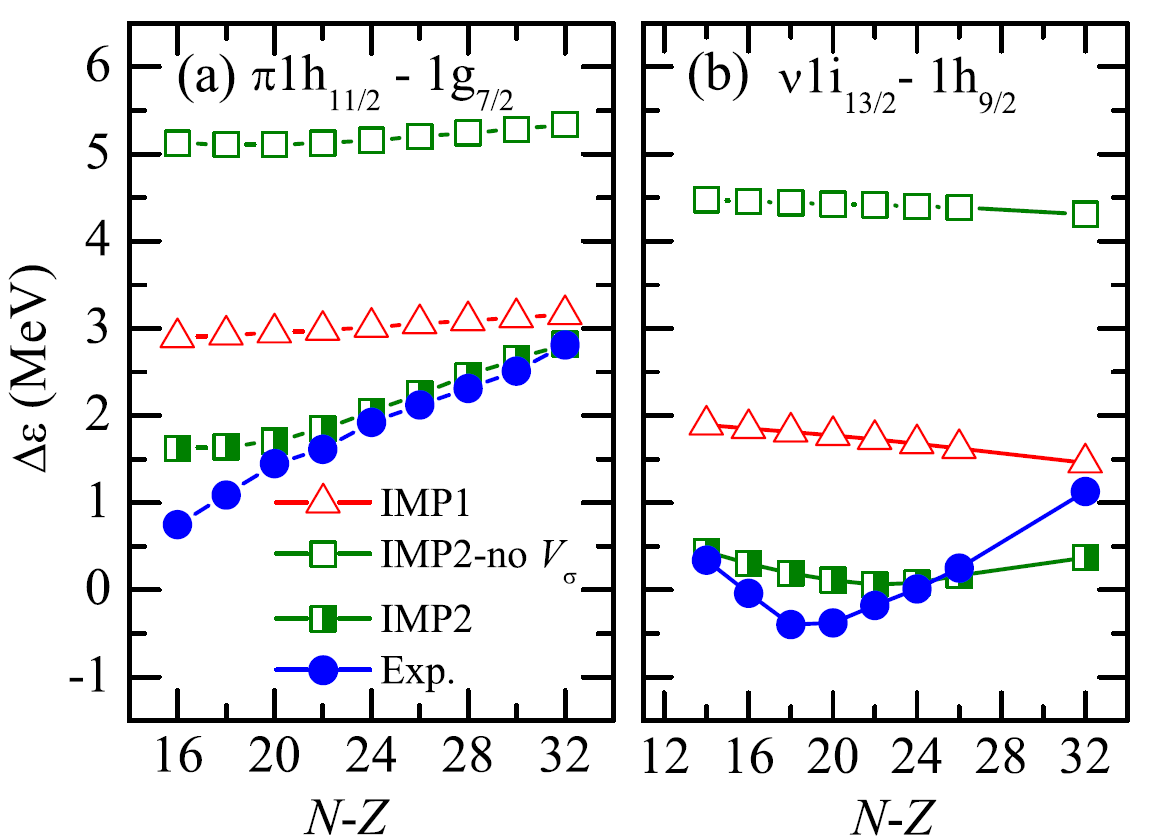Researchers Prove Tensor Force Invalid in Skyrme Density Functionals
The tensor force is a hot topic in nuclear physics, which affects the shell evolution. Moreover, the short-range correlation, which is dominated by the strong tensor force between unlike nucleons, is also an intriguing issue in current nuclear physics.
The zero-range tensor potential was firstly present in the original Skyrme interaction in 1956. And so far it has been widely used in nuclear physics.
However, in a recent paper published in Physical Review C, researchers from the Institute of Modern Physics (IMP) of the Chinese Academy of Sciences demonstrated that the tensor force plays no role in Skyrme density functionals.
The zero-range momentum-dependent Skyrme effective interaction is obtained through the simplification of the Fourier transform for the interaction in coordinate space via low-momentum expansion.
Based on the derived tensor force in momentum space via partial-wave expansion, researchers demonstrated such a tensor force invalid, and hence the widely employed tensor force of the Skyrme interactions invalid.
The individual reasons for the drop of each tensor channel in Skyrme-type interaction can be grouped as four types: 3S1 channel is exactly zero; zero due to the orthogonality between spherical harmonics for off-diagonal matrix element, such as 3SD1 channel; beyond the order of k2, such as 3D2 channel; can be reabsorbed into existing Skyrme t2-x2 component, such as 3P0channel.
To replace the tensor force so as to improve the description of single-particle levels, researchers then proposed a new scheme by introducing the central σ1 · σ2 term and accordingly built two new Skyrme interactions—IMP1 and IMP2. The shell evolution in Sn isotopes and N = 82 isotones can be well reproduced by IMP2.
According to the study, the introduction of the central σ1· σ2 interaction is just a phenomenological treatment. Therefore, the parameter sets applicable to shell evolutions could not be anticipated being valid for excited states such as Gamow-Teller and spin-dipole states.
Link to the paper: https://journals.aps.org/prc/abstract/10.1103/PhysRevC.101.014305

Fig.1 The improvement of the shell evolution in Sn isotopes and N=82 isotones resulting from the σ1· σ2 term. (Image by Dong Jianmin)
Contact :
LIU Fang
Institute of Modern Physics
Email: fangliu@impcas.ac.cn
Reference
Scientists Reveal Impact of New Masses of Nuclei on X-ray Bursts
Recently, significant progress was made in understanding the impact of new masses of nuclei on the X-ray bursts by an international nuclear astrophysical team. Type I X-ray bursts are the most frequent types of thermonuclear stellar explosions in the Galaxy. Nuclear masses are key nuclear physics inputs in rp-process, and the accuracy is vital for soundly understanding the mechanism of X-ray bursts.


 甘公网安备 62010202000713号
甘公网安备 62010202000713号


